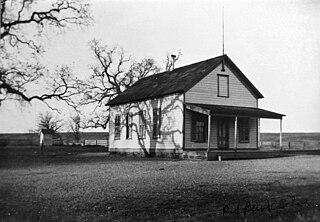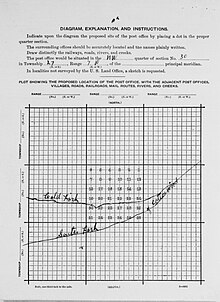
Tehama County is a county located in the northern part of the U.S. state of California. As of the 2020 census, the population was 65,829. The county seat and largest city is Red Bluff.

The Klamath Mountains are a rugged and lightly-populated mountain range in northwestern California and southwestern Oregon in the western United States. As a mountain system within both the greater Pacific Coast Ranges and the California Coast Ranges, the Klamath Mountains have a varied geology, with substantial areas of serpentinite and marble, and a climate characterized by moderately cold winters with very heavy snowfall and warm, very dry summers with limited rainfall, especially in the south. As a consequence of the geology and soil types, the mountains harbor several endemic or near-endemic trees, forming one of the largest collections of conifers in the world. The mountains are also home to a diverse array of fish and animal species, including black bears, large cats, owls, eagles, and several species of Pacific salmon. Millions of acres in the mountains are managed by the United States Forest Service. The northernmost and largest sub-range of the Klamath Mountains are the Siskiyou Mountains.

The Mendocino National Forest is located in the Coastal Mountain Range in northwestern California and comprises 913,306 acres (3,696.02 km2). It is the only national forest in the state of California without a major paved road entering it. There are a variety of recreational opportunities — camping, hiking, mountain biking, paragliding, backpacking, boating, fishing, hunting, nature study, photography, and off-highway vehicle travel.

The Yolla Bolly–Middle Eel Wilderness is a federally designated wilderness area in the Yolla Bolly Range of the southern Klamath Mountains and the Inner Northern California Coast Ranges, in Northern California.

Rancho Saucos was a 22,212-acre (89.89 km2) Mexican land grant in present-day Tehama County, California given in 1844 by Governor Manuel Micheltorena to Robert H. Thomes. The name means "Ranch of the Elder trees". The grant extended along the west side of the Sacramento River from Elder Creek and Rancho Las Flores on the north to Thomes Creek on the south, and encompassed present-day Tehama.

The Middle Fork Eel River is a major tributary of the Eel River of northwestern California in the United States. It drains a rugged and sparsely populated region of the Yolla Bolly Mountains, part of the California Coast Range, in Trinity and Mendocino Counties. Its watershed comprises roughly 745 square miles (1,930 km2) of land, or 20% of the entire Eel River basin. The river provides groundwater recharge and is used for recreation and for industrial, agricultural and municipal water supply by residents.
Beegum Creek is a stream located in Shasta and Tehama counties, southwest of Redding in the U.S. state of California. The stream cuts through Beegum Gorge and runs 16 miles (26 km) before it empties into Cottonwood Creek.

Cottonwood Creek is a major stream and tributary of the Sacramento River in Northern California. About 68 miles (109 km) long measured to its uppermost tributaries, the creek drains a large rural area bounded by the crest of the Coast Ranges, traversing the northwestern Sacramento Valley before emptying into the Sacramento River near the town of Cottonwood. It defines the boundary of Shasta and Tehama counties for its entire length. Because Cottonwood Creek is the largest undammed tributary of the Sacramento River, it is known for its Chinook salmon and steelhead runs.

North Yolla Bolly Mountain is a 7,868-foot (2,398 m) peak in the Klamath Mountains of the Coast Ranges located in Trinity County, Northern California. The mountain is located in an isolated part of the Yolla Bolly-Middle Eel Wilderness, in the Shasta-Trinity National Forest, about 50 miles (80 km) west of Red Bluff. It is situated about 13 miles (21 km) from Mount Linn, the highest point of the Coast Ranges south of the Trinity Alps.

Thomes Creek is a major watercourse on the west side of the Sacramento Valley in Northern California. The creek originates in the Coast Ranges and flows east for about 62 miles (100 km) to join the Sacramento River, at a point about 7 miles (11 km) northeast of Corning in Tehama County.

Red Bank Creek is a major stream in Tehama County, California, and a tributary of the Sacramento River. About 39 miles (63 km) long, it originates in the foothills of the Coast Ranges, near the boundary of the Mendocino National Forest, and flows east across the Sacramento Valley to join the Sacramento River near Red Bluff. Red Bank Creek, like the other streams draining this part of the western Sacramento Valley, is a highly seasonal stream that flows only during the winter and spring.
Beegum, also known as Bee Gum, is a defunct town which was located in an unincorporated area of Tehama and Shasta counties, in the U.S. state of California. In the early 1900s, it was a mining town in the Harrison Gulch mining district.
Colyear Springs is a spring in the U.S. state of California. The spring is located 4 miles (6.4 km) north of Raglin Ridge. Colyear Springs was named after John G. Colyear, a pioneer settler. Variant names were "Colyer Springs" and "Colyer's Springs". According to a California State Bureau of Mines report of 1917, "These springs are situated high on the mountain side north of the North Fork of Elder Creek, 35 miles west of Red Bluff. Six springs here rise in a cemented place 5 yards in diameter, among the pine trees, on a moderate slope. One of the largest yields cold sulphur water, while the others are only slightly sulphuretted. On the slope about 8 yards above these springs, there is a clear water spring that yields 4 to 5 gallons a minute. Dr. J. A. Owen of Red Bluff, owner."

El Camino is a rural community and irrigation district near Gerber in Tehama County, in the U.S. state of California. As a special district, the El Camino Irrigation District is owned by local residents who govern it through locally elected board members.
Henleyville is an unincorporated community in Tehama County, in the U.S. state of California.

Lowrey's was a settlement in Tehama County, California that was named for George M. Lowrey and located on Elder Creek. What remains of it today are a ranch and a road named Lowrey Road.
Lyonsville in Tehama County, California was once the site of the Lyonsville Mill, a major lumber operation which was once the largest sawmill in Northern California. It was located between the north and south forks of Antelope Creek, high above Hogsback Ridge. The mill served logging operations around Antelope Creek, and around it grew a town of the same name, with two saloons, a community hall, a general store, a post office, and machine and blacksmith shops. At its peak, there were more than 1000 people in the town.

Red Bank is an agricultural district in Tehama County, in the U.S. state of California. The district and nearby Red Bank Creek both take their names from Rancho Barranca Colorado. The red soil in question was said to be on the north bank of the creek. Red Bank was later the name of a post office in the district, previously named Eby, and of a school in the district.
Loybas Hill is an unincorporated community in Tehama County, in the U.S. state of California. According to the Geographic Names Information System, the community is on the west side of the Sacramento River and 4.6 miles southeast of the city of Corning.
















